Chinese anti-tank guns on display at the Military Museum of the Chinese Revolution
As already mentioned in the previous part of the virtual tour of the Military Museum of the Chinese Revolution, in the 1930s, active military-technical cooperation was conducted between Germany and China. By the beginning of the Sino-Japanese war in 1937, there were some German 37 mm 3,7 cm Pak 29 anti-tank guns in China. This gun was manufactured by Rheinmetall AG since 1929 and had wooden wheels without sprouts. Subsequently, the gun was modernized and put into service under the designation 3,7 cm Pak. 35/36. The 3,7 cm Pak 29 and 3,7 cm Pak 35/36 guns used the same ammunition and basically had a different wheel drive. In 1930, a license for the production of 3,7 cm Pak 29 guns was sold to China, and it was produced at an artillery factory in Changsha under the designation Type 30.
The mass of the Type 30 gun in combat position was 450 kg. Combat rate of fire - up to 12-14 rounds / min. An armor-piercing projectile weighing 0,685 g left the barrel with an initial speed of 745 m / s and at a range of 500 m normal it could penetrate 35 mm of armor. Given the fact that the Japanese army fighting in China did not have tanks with anti-shell armor, 37-mm German-style guns were a very effective means of anti-tank defense.
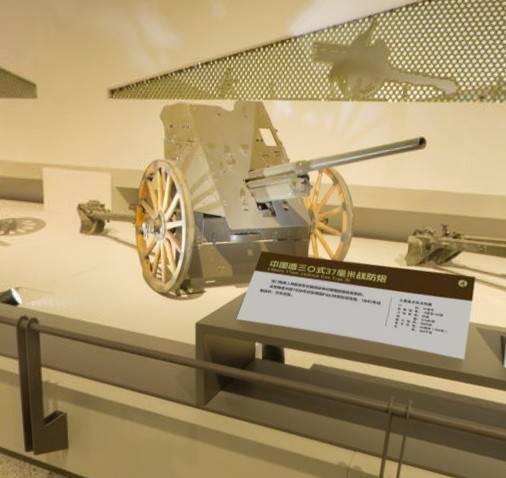
In the initial period of the war in China, the Japanese imperial army used Type 89 medium tanks (maximum armor thickness 17 mm), Type 92 light tanks (maximum armor thickness 6 mm), Type 95 light tanks (maximum armor thickness 12 mm) and Type 94 wedges ( maximum armor thickness 12 mm). The armor of all these vehicles at a real firing range could be easily penetrated by a 37 mm shell. However, due to their small size, poor organization and poor preparation of Chinese artillery calculations, Type 30 anti-tank guns did not have a particular effect on the course of hostilities.
Another anti-tank weapon of German origin available in the collection of the Military Museum of the Chinese Revolution is the 50-mm anti-tank gun 5 cm Pak. 38.
Unfortunately, the information plate is not reflected in any way story the appearance of this weapon in China. It is possible that the gun is 5 cm Pak. 38 was delivered to the PRC in the early 1950s for use by Chinese volunteers in Korea. It is known that Chinese and North Korean units that fought against UN troops actively used the captured German rifle weapon and artillery systems transferred by the Soviet Union. Even with the use of tanks with anti-shell armor on the Korean Peninsula, the 5 cm Pak gun. 38 was of some combat value.
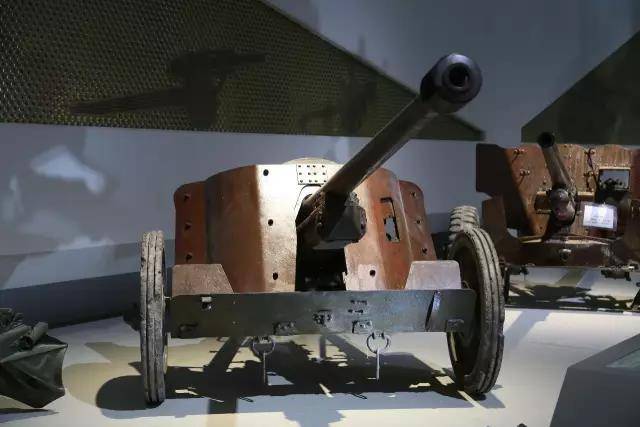
At a range of 500 m, a 50 mm armor-piercing projectile, weighing 2 kg, at an initial speed of 835 m / s, could normally penetrate armor 78 mm thick. Thus, the gun 5 cm Pak. 38 had certain chances to hit the American tank M4 Sherman. A well-trained calculation could provide a combat rate of up to 15 rounds / min. The main disadvantage of this gun with a relatively small caliber was its mass, which reached 840 kg in the combat position. Which made it difficult to roll over rough terrain by calculation forces.
In addition to the German ones, the museum’s collection contains Japanese 37-47 mm anti-tank guns. In 1936, the mass production of the Type 37 94 mm anti-tank gun began in Japan. Its device was largely similar to the Type 37 infantry 11 mm cannon, but more powerful ammunition was used to shoot armored vehicles. A 37-mm armor-piercing projectile weighing 645 g with an initial speed of 700 m / s, at a distance of 450 m, normally could penetrate 30 mm of armor. The mass of the gun in the combat position was 324 kg, in the transport - 340 kg. Rate of fire up to 20 rounds / min. Possessing good ballistic data and rate of fire for its time, the 37-mm Type 94 gun was largely archaic in design. The unsprung running and wooden iron-studded wheels did not allow towing it at high speed. Until the second half of 1943, more than 3400 guns were produced.
In 1941, a modernized version of the anti-tank gun, known as Type 1, was adopted. The main difference was the barrel, extended to 1850 mm, which allowed to increase the initial velocity of the projectile to 780 m / s.
Although the armor penetration of the 37 mm Type 1 gun in the early 1940s was already inadequate, until April 1945, 2300 pieces were released.
Separate anti-tank 37 mm guns were occasionally captured by the Kuomintang and the Communist troops during the Sino-Japanese war. More than two hundred 37-mm guns were at the disposal of the PLA after the victory over the Kuomintang. However, by the beginning of the 1950s, these guns were hopelessly outdated and were used mainly for educational purposes.
In 1939, a 47 mm Type 1 anti-tank gun was adopted in Japan. The gun received a sprung suspension and wheels with rubber tires. This made it possible to provide towing with mechanical traction. The mass of the 47-mm gun in combat position was 754 kg. The initial velocity of 1,53 kg of armor-piercing tracer - 823 m / s. At a distance of 500 m, the projectile, when hit at a right angle, could penetrate 60 mm of armor.
For the late 1930s, the Type 1 gun fully complied with the requirements. However, the combat experience demonstrated that the frontal armor of an American medium tank steadily penetrated at a distance of no more than 200 m. Compared to 37 mm shells, a 47 mm fragmentation shell weighing 1,40 kg contained much more explosive and was more effective at shooting on manpower and light field fortifications. Before the end of World War II, Japanese industry managed to surrender about 2300 47-mm Type 1 guns. Several hundred such cannons thrown by Generalissimo Chiang Kai-shek troops and transferred by the Soviet Union were in the PLA in the early 1950s.
The exposition of the Military Museum of the Chinese Revolution presents 40 and 57-mm British-made anti-tank guns: QF 2 pounder and QF 6 pounder.
The 40 mm QF 2 pounder gun had a very original design. The “Two Pound” in the battle rested on a low base in the form of a tripod, which ensured a horizontal angle of 360 °, and the wheels were torn off the ground and fixed on the side. After moving into a combat position, the cannon could easily rotate to any point, allowing shooting at moving armored vehicles in any direction. Strong adhesion to the ground of the cruciform base increased the firing efficiency, since the gun did not "walk" after each shot, maintaining its aim. The Two-Pounder was superior to the 37 mm German anti-tank gun 3,7 cm Pak 35/36 in a number of ways. At the same time, in comparison with many guns of that time, the design of the British 40-mm gun was quite complicated, in addition, it was much heavier than other anti-tank guns. The mass of the gun in combat position was 814 kg. An armor-piercing 1,08-kg shell that left the gun’s barrel at a speed of 850 m / s pierced 457 mm homogeneous armor at a range of 50 m. The rate of fire was 20 rds / min.
How this 40-mm British-made cannon ended up in the Chinese museum is not clear. Perhaps the gun was captured by the Japanese imperial army in one of the British colonies in the Far East, and subsequently, after the surrender of Japan, it was at the disposal of the Chinese.
The history of the 57 mm QF 6 pounder gun is more transparent. The Six Pound was captured by Chinese volunteers during the fighting on the Korean peninsula. The museum exhibits a modification of the QF 6 pounder Mk IV with an elongated barrel equipped with a muzzle brake.
The first anti-tank six-pounders entered the army in May 1942. At that time, the "six-pound" easily dealt with any enemy tank. An armor-piercing 57 mm shell weighing 2,85 kg per 500 m when hit at an angle of 60 ° confidently pierced 76 mm armor. In 1944, armor-piercing shells with armor penetration along the normal 120-140 mm from a distance of 900 m appeared. The design of the 6-pound gun was much simpler than that of the 2-pound one. The forked bed provided a horizontal angle of 90 °. The mass of the gun in the combat position was 1215 kg. Rate of fire - 15 rounds / min. From 1942 to 1945, more than 15000 six-pounders were produced. The QF 6 pounder guns were in service with the British Army until the late 1950s and were actively used during the Korean War.
At the end of 1941, the first 37 mm M3A1 anti-tank guns appeared in China. In its class, it was a very good weapon, not inferior to the German 3,7 cm Pak. 35/36. However, the American 37 mm cannon by the beginning of the 1940s against the background of the Japanese 47 mm Type 1 and the German 50 mm 5 cm Pak. 38 looked pale. However, the production of 37 mm guns continued until the end of 1943. From 1940 to 1943, more than 18000 37-mm anti-tank guns were fired in the United States.
Although the 37-mm guns proved mediocre in North Africa and Italy, they successfully fought with weakly armored Japanese armored vehicles in Asia and were used until the end of hostilities. The energy of the 37-mm shells was enough to overcome the thin armor of Japanese tanks. At the same time, the M3A1 guns were much cheaper than the 57- and 76-mm anti-tank guns, not less important factors were the better maneuverability, compactness and the ability to tow a Willys MB jeep. With a mass of about 400 kg, a 37-mm gun could be moved and masked by calculation forces, which was especially important in off-road conditions on islands overgrown with jungle. In addition to the struggle with armored vehicles, the 37-mm M3A1 gun was used as an instrument for directly supporting infantry. In the latter case, the low power of a 0,86 kg fragmentation projectile containing 36 g of TNT significantly limited its effectiveness, but against a massive attack by the Japanese infantry, a shotgun shot with 120 steel bullets worked well.
For the American 37-mm anti-tank guns, two types of armor-piercing shells were created. Initially, the ammunition included a shot with a shell weighing 0,87 kg, which had an initial speed of 870 m / s. At a distance of 450 m normal, he pierced 40 mm armor. Later, a projectile with an increased initial velocity and equipped with a ballistic tip was adopted. Penetration of this shell increased to 53 mm.
Until 1947, the Americans delivered to the Kuomintang about 300 37-mm anti-tank guns. A significant part of them was captured by the Chinese Communists. These guns were used in the initial period of hostilities in Korea, and as training were in service with the PLA until the mid-1960s.
The battles of the summer of 1943 in Sicily and in Southern Italy revealed the failure of American 37-mm guns against medium German tanks. In mid-1943, the Americans turned off the production of M3A1, replacing it on the conveyor with a 57-mm M1 gun, which was a slightly modified version of the British "six-pound". Later, modifications appeared M1A1 and M1A2, characterized by an improved horizontal guidance mechanism. Before the end of World War II, US industry produced more than 15000 guns. According to its main characteristics, the American 57-mm anti-tank gun fully corresponded to the British original.
Given that the ammunition included 2,97 kg fragmentation grenade, containing about 200 g of explosives, 57-mm anti-tank guns could be successfully used against manpower. It was in this role that the guns delivered to the troops of Generalissimo Chiang Kai-shek were used. M1A2 guns were also available in the UN forces operating on the Korean Peninsula. Several 57-mm guns of American production were captured by the PLA.
The museum collection also features Soviet-made anti-tank guns and their Chinese counterparts. From 1937 to 1941, China received several hundred Soviet 45-mm anti-tank guns arr. 1934 and arr. 1937. The 45-mm anti-tank gun was created on the basis of the 37-mm gun of the 1930 model (1-K), which, in turn, was designed by the German company Rheinmetall-Borsig AG and had much in common with the 3,7 cm Pak anti-tank gun 35/36.
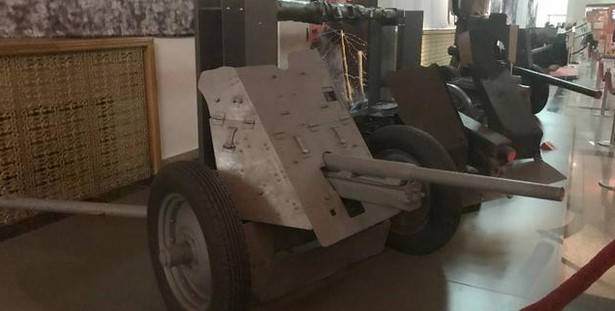
In the late 1930s, the 45-mm gun was a completely modern anti-tank gun, with good armor penetration and acceptable weight and size characteristics. With a mass in the firing position of 560 kg, a calculation of five people could roll it a short distance to change position. The characteristics of the guns made it possible to successfully fight at all ranges of aimed fire with armored vehicles protected by bulletproof armor. At a distance of 500 m, an armor-piercing projectile pierced 43 mm armor during normal tests. The initial velocity of the armor-piercing projectile weighing 1,43 kg was 760 m / s. The ammunition also included fragmentation and firing shots. The 2,14 kg fragmentation grenade contained 118 g of TNT and had a continuous lesion zone with a diameter of 3-4 m. The rate of fire of the 45 mm gun was 15-20 rounds / min.
In 1942, the 45-mm anti-tank gun M-42 was adopted by the Red Army. Compared to earlier samples of the same caliber, it had increased armor penetration. This was achieved by lengthening the barrel and through the use of more powerful ammunition, which increased the initial velocity of the armor-piercing projectile to 870 m / s. At a range of 500 m, an armor-piercing projectile normally pierced 61 mm of armor. With a firing range of 350 m, a sub-caliber projectile could overcome 82 mm thick armor. Since mid-1943, due to the increased security of German tanks, the M-42 anti-tank gun no longer fully met the requirements, due to the relatively low cost of manufacture, good mobility and ease of camouflage at a firing position, its use continued until the end of hostilities. From 1942 to 1946, 11156 M-42 guns were produced in the USSR.
After the end of World War II, the Soviet Union transferred about 1000 M-42 anti-tank guns to the Chinese Communists. Tools of this type were very actively used by the PLA during the war in Korea. Weight in the combat position of 620 kg allowed to raise guns to the top of the hills without the use of mechanical traction. As a rule, 45-mm guns supported infantry with fire, but in some cases they were successfully used against American armored vehicles. Although the M-42 guns were hopelessly outdated by the mid-1950s, their service in the combat units of the PLA continued until the mid-1960s.
A much greater danger to all, without exception, American and British tanks that fought on the Korean Peninsula, represented 57-mm armor-piercing shells of ZiS-2 guns.
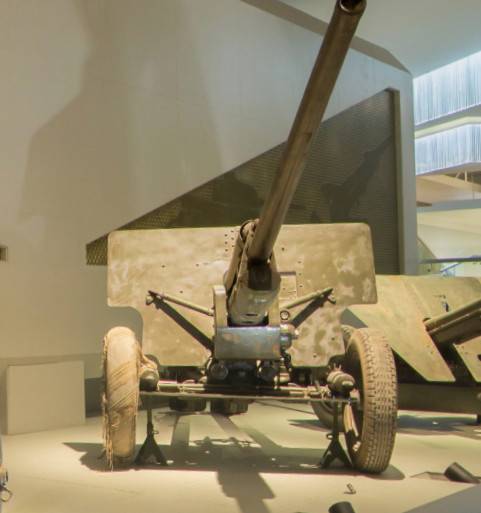
According to the armor penetration table, the 57 mm armor-piercing projectile weighing 3,19 kg with an initial speed of 990 m / s per 500 m normally pierced 114 mm armor. A sub-caliber armor-piercing shell of a reel-shaped mass weighing 1,79 kg with an initial velocity of 1270 m / s under the same conditions could penetrate 145-mm armor. The ammunition also had shots with a 3,75 kg fragmentation grenade containing 220 g of TNT. At a range of up to 400 m against the enemy infantry, buckshot could be used.
The exact number of 57-mm ZiS-2 cannons delivered to China is not known, however, in 1955, China began mass production of a Chinese licensed analogue known as Type 55. Over 10 years, the Chinese industry produced about 1000 57-mm Type 55 anti-tank guns, which were in service until the early 1990s.
To combat tanks during the Korean War, the divisional 76,2 mm ZiS-3 guns were also used. An armor-piercing projectile weighing 6,5 kg had an initial speed of 655 m / s, and at a range of 500 m, it could normally penetrate 68 mm of armor. A sub-caliber projectile, which weighed 3,02 kg, having left the barrel at a speed of 950 m / s, pierced 85 mm armor at the same distance along the normal. This was enough to defeat the M4 Sherman medium tanks, but the frontal armor of the M26 Pershing and M46 Patton tanks for 76,2 mm shells was invulnerable.
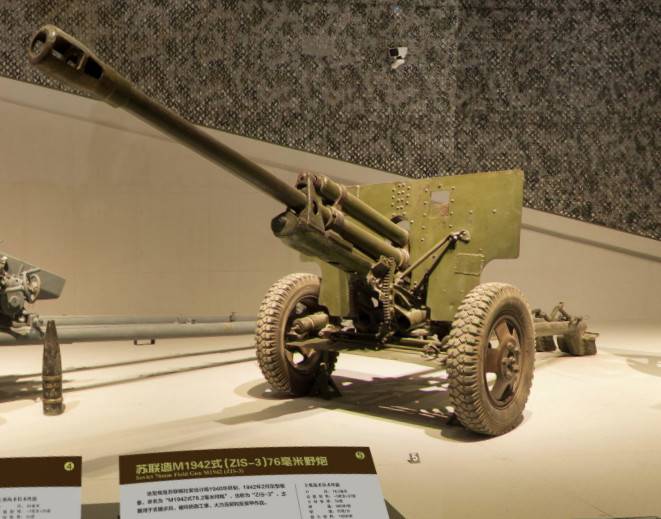
The insufficient armor penetration of armor-piercing and sub-caliber shells was partially offset by the presence in the ammunition of a shot with a cumulative grenade, which, when hit at a right angle, could penetrate armor 90-100 mm thick. Since the second half of 1952, Chinese volunteers used 76,2 mm ZiS-3 guns mainly for firing from closed positions.
After the end of hostilities on the Korean Peninsula, the command of the PLA became concerned about improving the combat characteristics of anti-tank artillery. In this regard, in the framework of military-technical cooperation with the USSR, several dozen 85-mm anti-tank guns D-44 were acquired.
The development of the D-44 anti-tank gun began during the years of World War II; it was only possible to take the gun into service in 1946. Externally, the D-44 strongly resembled the German 75-mm anti-tank Cancer 40. Until the end of production in 1956, more than 10000 units were produced. The mass of the gun in the combat position was 1725 kg. Firing rate of 15 rounds / min. An armor-piercing projectile weighing 9,2 kg had an initial speed of 800 m / s, and at a distance of 1000 m, it could normally penetrate 100 armor. A 5,35 kg sub-projectile shell left the barrel with an initial speed of 1020 m / s and at a range of 500 m when hit at right angles it pierced 140 mm of armor. The cumulative projectile, regardless of range, normally pierced 210 mm armor. In the 1960s, due to the increased protection of Western tanks, the D-44 guns were transferred to divisional artillery, where they replaced the 76,2 mm ZiS-3, and the battle with the tanks was assigned to more powerful artillery systems and ATGMs.
In the second half of the 1950s, the PLA began to receive the 85-mm Type 56 gun, which is a licensed copy of the D-44. These guns, along with the 57 mm Type 55 guns, until the early 1990s formed the basis of anti-tank artillery attached to the PLA infantry and tank divisions.
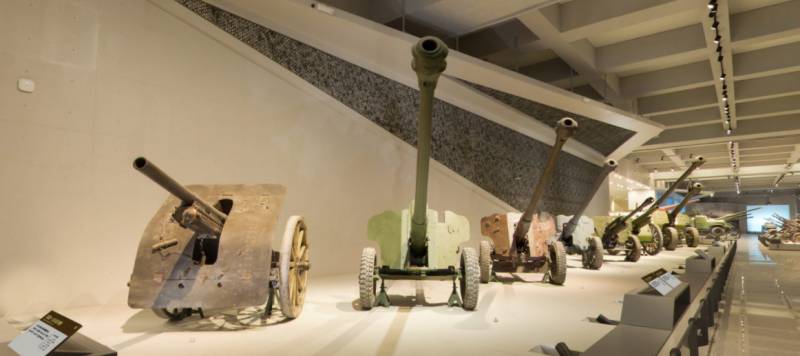
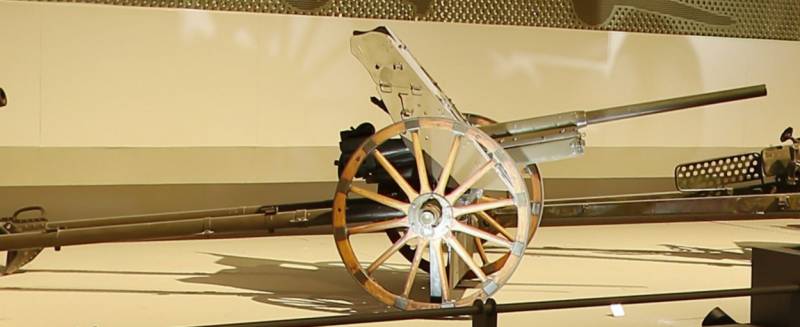
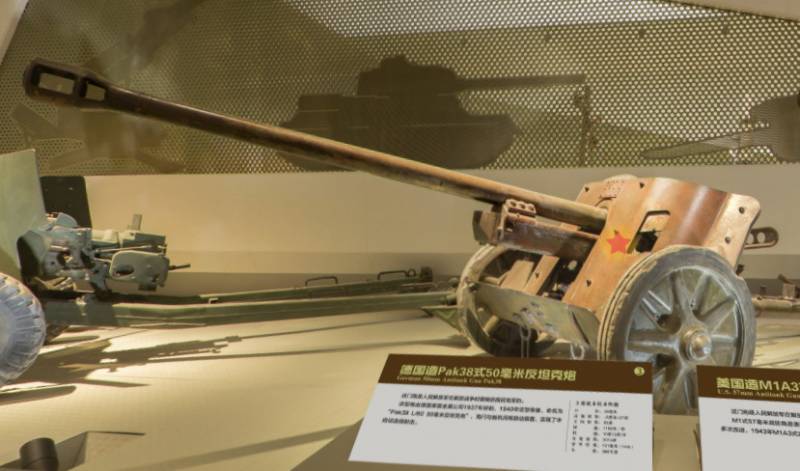
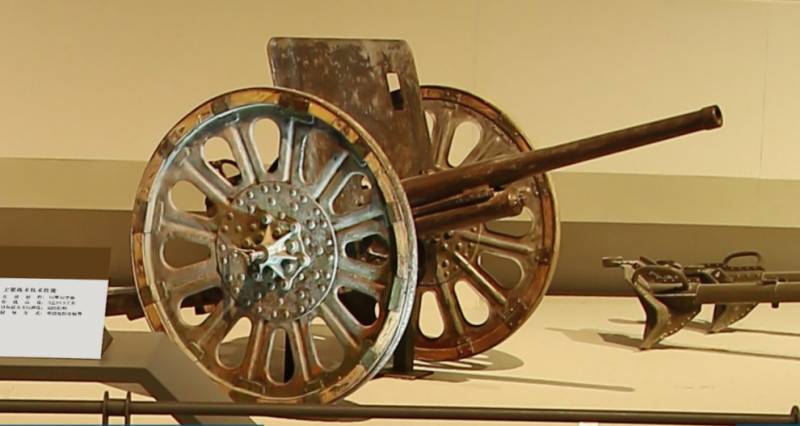
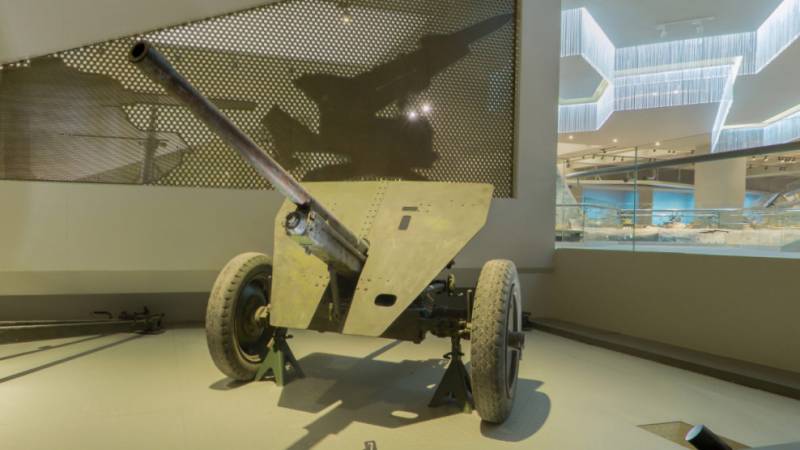
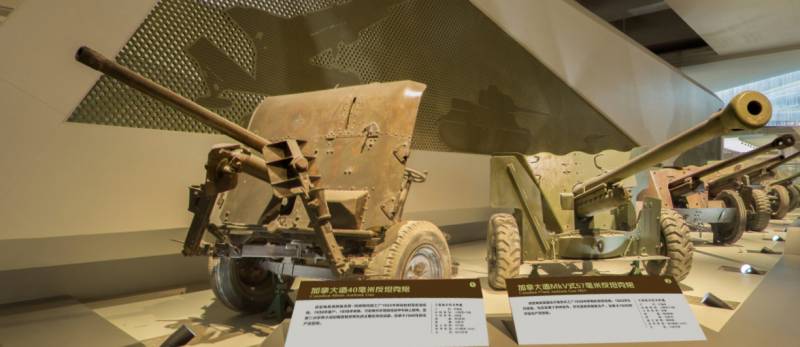
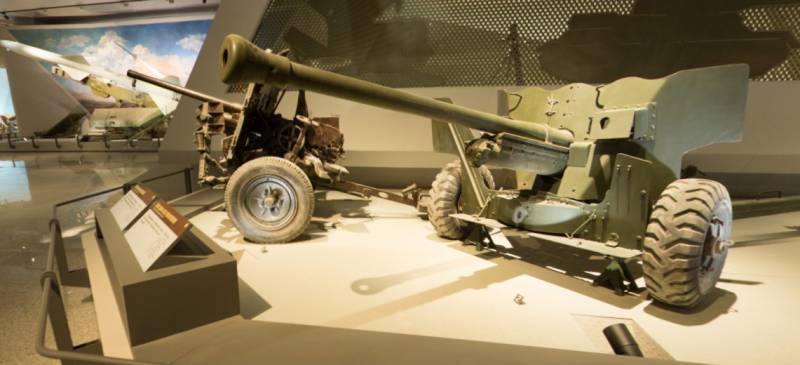
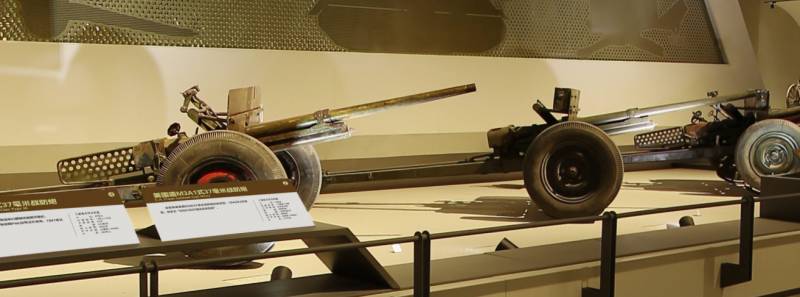
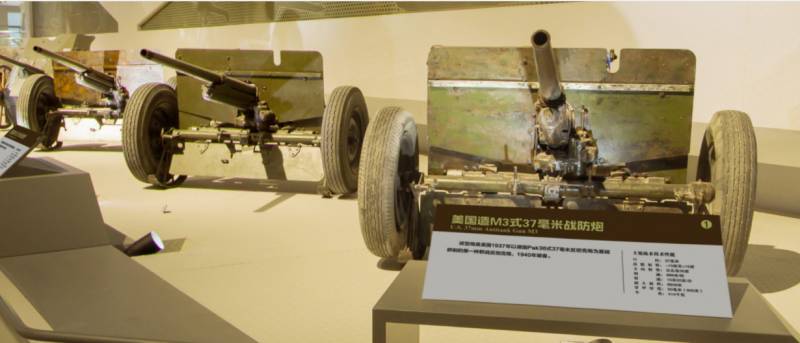
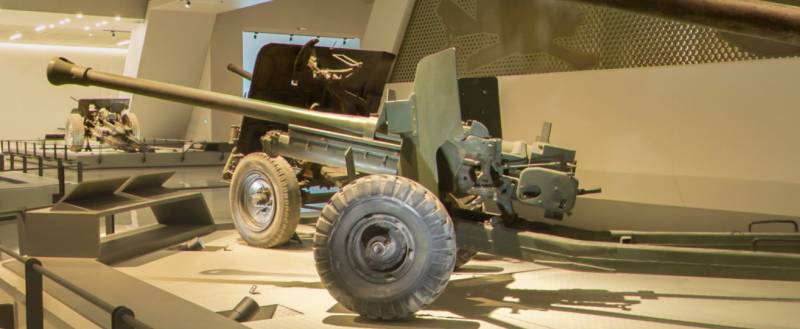
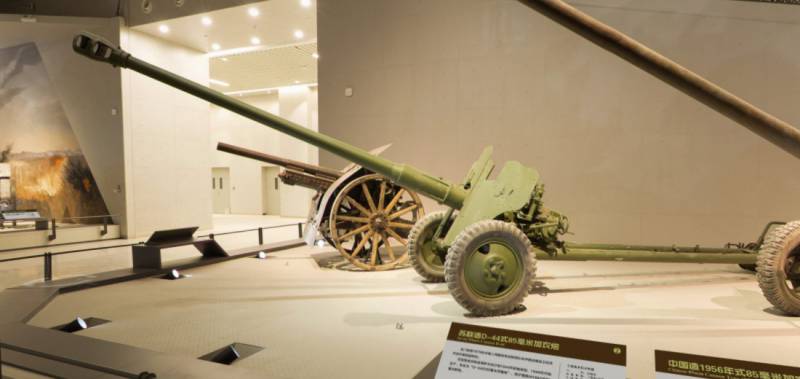
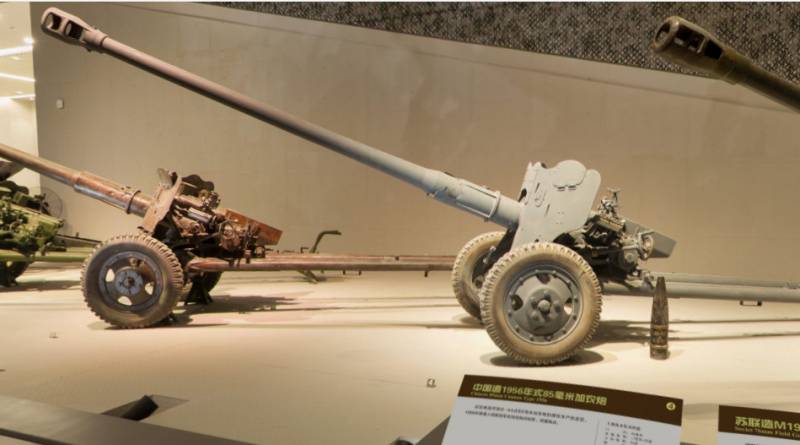
Information